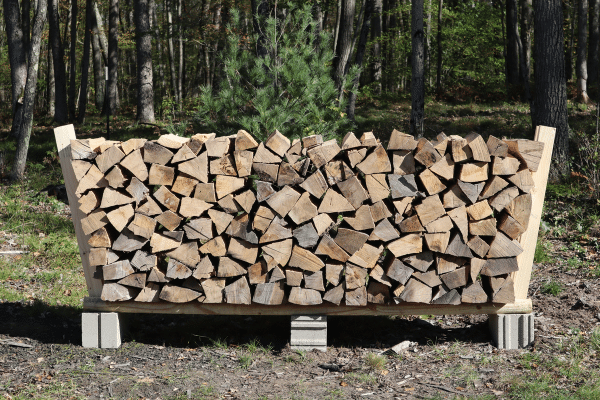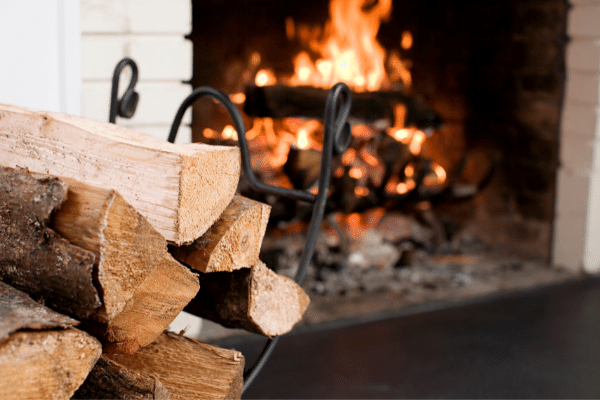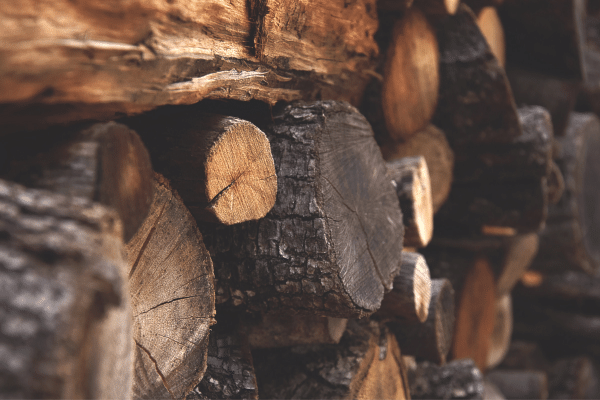- Home
- Best Firewood
- Best Firewood for a Fireplace
Best Firewood For A Fireplace
This post may contain affiliate links so I earn a commission.
Choosing the best firewood for a fireplace not only makes using your indoor fireplace safer, but the relaxing flame created by quality firewood is hard to duplicate.
A fireplace just makes a house feel like a home.
From a stately marble fireplace in a Victorian home to a fieldstone fireplace in a rustic cabin, a fireplace is a focal point that is as functional as it is cozy.
A fireplace differs greatly from a wood burning stove.
To get the best results, you need to burn firewood that works well in an open fireplace as opposed to a closed off wood stove.
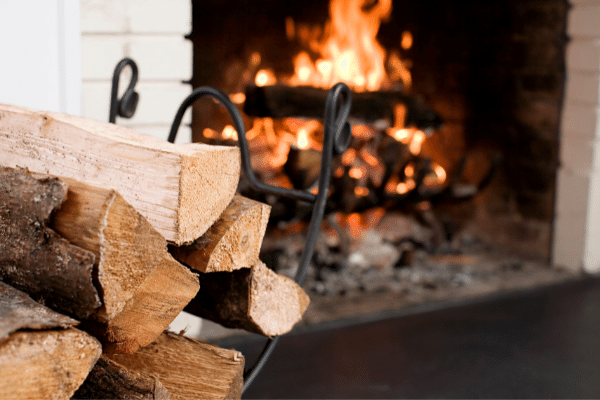
In fact, understanding which types of wood are NOT the best firewood to burn in a fireplace makes choosing the best option a lot easier.
Once you understand some of the potential dangers of fireplaces, you can select the best firewood for your next romantic fire.
How To Avoid Creosote In Your Fireplace
When organic material, like wood is burned, a type of tar is released.
This byproduct can range from dusty soot, to thick sticky tar, to hard rock-like deposits.
Creosote buildup poses a safety hazard in all wood-burning devices, but it is more problematic in fireplaces.
First, open masonry fireplaces are not as efficient at burning wood as enclosed wood burning stoves.
Since the burning process is not as thorough in a fireplace, more byproducts of the burning process – creosote – are released.
Fireplace chimneys are often oddly shaped and some of them lack metal chimney liners.
Creosote can collect in nooks and crannies and build up to dangerous levels, especially on bricks.
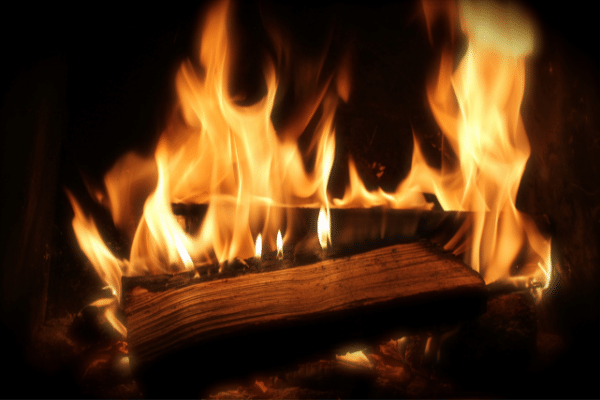
Creosote is highly flammable, so if your fireplace chimney has a build up of creosote, you are at a higher risk of having a chimney fire.
Of course, having your chimney cleaned and inspected by a professional on an annual basis will help if you have a creosote problem, but you can prevent creosote build up by selecting the best firewood for a fireplace.
All types of wood have creosote, but some have lower creosote levels than others.
Which is the best firewood for a fireplace?
The answer is not as simple as naming a species of wood.
The key is to burn wood that is low in moisture and pitch.
Pine often gets accused of producing a lot of creosote, but that reputation may be unfounded.
Pine and other softwoods burn hotter.
The smoke from these fires moves more rapidly up the chimney so there is less time for creosote condensation to form on the chimney.
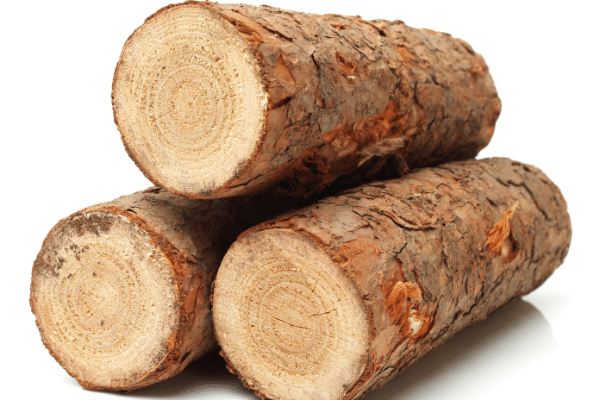
That’s not to say that you should only burn pine in your fireplace.
Pine contains more sap and resin than hardwood.
When that resin is not thoroughly burned, it becomes creosote.
That’s why most folks prefer hardwoods as the best firewood for a fireplace.
Well-seasoned oak, cherry, ash, and birch with a low moisture count – less than 20% moisture – is a better option for your fireplace as these woods aren’t very pitchy and, when properly aged, will produce lower amounts of creosote.
Why Does Wood Spark In The Fireplace?
A crackling fire might be welcoming in a Christmas Carol, but those sparks can be dangerous in an open fireplace.
An errant spark can escape the fireplace and land on your carpeting, furniture, or clothing, with disastrous results.
Embers and sparks from fireplace fires, especially unattended ones, ranks among the top causes of housefires.
To prevent this from happening to you, never leave a fire unattended, use a glass fireplace door or metal mesh curtain, and burn wood that doesn’t snap, crackle, and pop.
The best firewood for a fireplace is wood that is low in sap.
When heated, the sap inside a piece of wood expands until it has nowhere to go causing it to burst from the wood in a loud pop.
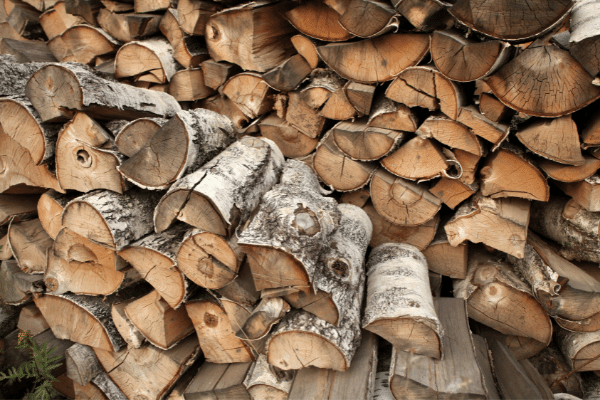
It is the same concept that makes popcorn pop.
When the wood bursts it shoots forth tiny, fiery chunks like mini, flaming projectiles.
Sap can be present in all types of firewood, but it is noticeably higher in softwood species, including fir, pine, and cedar.
When purchasing the best firewood for a fireplace, check the cut ends of the wood.
If you see hard, golden droplets of dried sap on the wood, that’s a pretty good indication that there is too much resin sap in the wood.
When it is burned, it will likely throw sparks.
Sparks can also be caused by pockets of moisture within the firewood regardless of the species of wood you're burning.
If you are diligent about burning only dry, well-seasoned firewood with a low moisture content, you can avoid unexpected sparks.
Firewood Options That Don't Create A Lot Of Smoke
Fireplaces are open containers, unlike wood burning stoves.
Although they are designed with flues and chimneys to carry the smoke away, it doesn’t always work as planned.
Until the fire gets roaring, there may not be enough draw, or draft to pull the smoke up through the chimney.
Or it could be windy outside, causing occasional downbursts that fill your room with smoke.
While some of these factors are beyond your immediate control, there are measures you can take to reduce the amount of smoke your fireplace produces.
It is all about firewood selection.
Green wood that is not properly seasoned will produce more smoke when it burns than dry firewood.
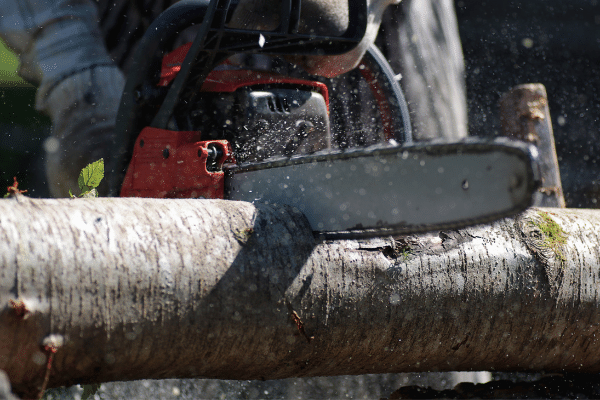
Unseasoned wood also burns slower and creates less heat, meaning that it will take much longer to get the fire going strongly enough to create a good draft.
Until then, you will have to deal with an excess of smoke.
Aim instead to only burn firewood with a low moisture content in your fireplace that will start easily and create a fast, hot fire.
To reduce the amount of smoke your fireplace puts off, choose to burn low-smoking hardwoods.
Some types of hardwood like maple, ash, hickory, and oak, don’t smoke as much as other woods.
Avoid burning elm and poplar since these species are notorious for producing a lot of smoke.
They are better suited for outside wood furnaces.
The Best Firewood For A Fireplace That Smells Great
A fireplace appeals to all your senses, including smell.
Wood burning stoves are kept closed so you don’t get the full sensory experience of the fire like you do with an open masonry fireplace.
When you walk into a home with a cheery fireplace, it smells welcoming and homelike.….that is, if you are burning firewood that smells great.
Ask anyone with a fireplace and they will tell you that cherry and hickory are the two best-smelling firewoods to burn.
Cherry offers a more distinctive aroma, while hickory is more of a classic scent.
Oak and alder are also favorites because the smell is mild and pleasing.
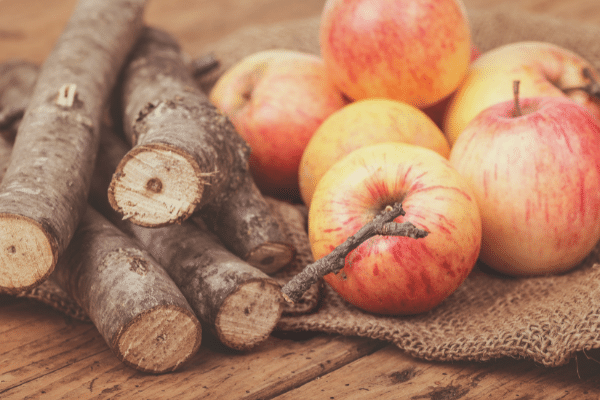
You will notice that walnut wood has a woodsy, earthy scent, while cedar is rich and fragrant.
There are also some firewoods you should avoid burning in your fireplace because the smell they produce is unpleasant and off-putting.
Both silver maple and elm trees tend to absorb the odors of their surroundings.
If the trees grow near a swamp, dump, or sewer line, those smells are absorbed into the wood and released when burned.
Buckeye wood is also quite stinky when burned, making it unpopular for fireplace users.
In fact, the smell is so bad that most people won’t even burn it in bonfire pits and some say the smell of buckeye smoke is akin to the odor of rotting animals.
The Best Firewood For A Fireplace - Overall
A fireplace is a wonderful addition to any home.
With a bit of knowledge, you can ensure that your fireplace remains an asset to your family.
It all starts with selecting the best firewood for a fireplace.
As we discussed, you want a firewood that will not produce an abundance of creosote, doesn’t spark, has a pleasant smell, and won’t fill your home with smoke.
Knowing what firewoods to avoid can help you narrow down your options enough to help you find a firewood that checks all the boxes to create a beautiful fire every time.
